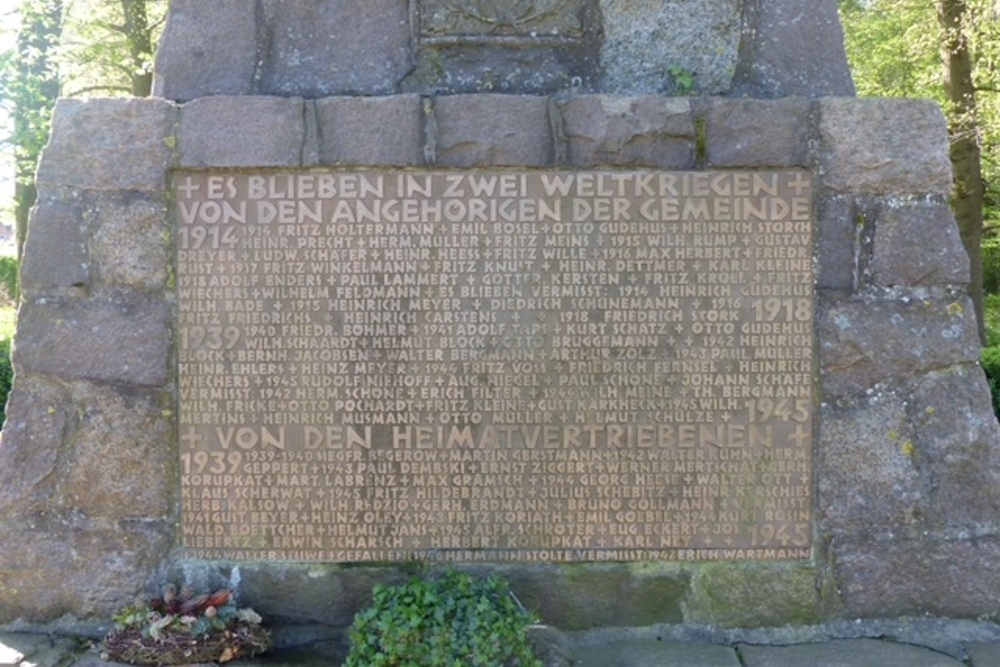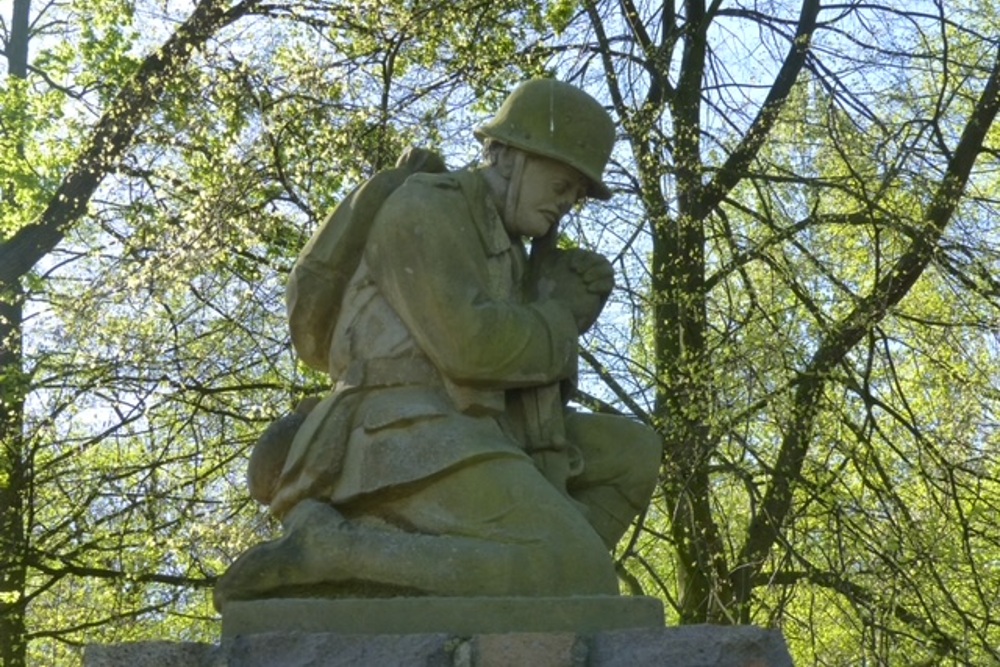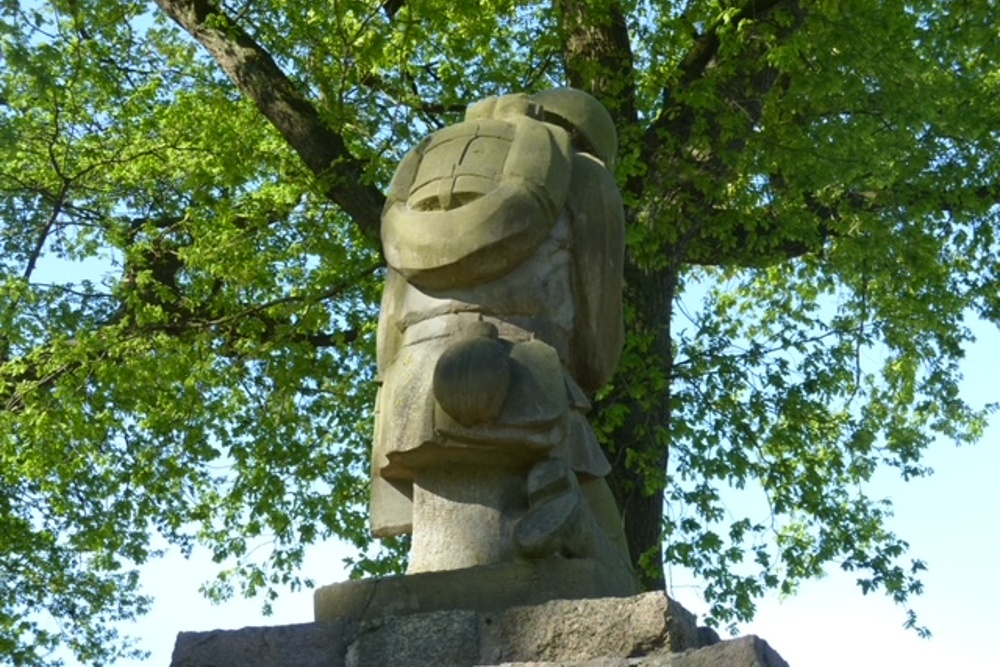War Memorial Groß Häuslingen
The memorial was inaugurated on 6 November 1921. It stands in the centre of the village and occupies a triangle of land between Schulträße and Haupstraße. The site consists of a stone entrance gate at the north end from where a gravel path leads to the monument. The area is marked off by small stone blocks on the east and west sides and a hedge to the south.
The stone monument roughly forms the shape of a stepped pyramid in three sections. The lower part consists of three shallow steps, followed by a large middle section containing the inscription. Above this is a smaller section decorated in the centre with a square plaque containing a carved iron cross surrounded by an oak leaf wreath. Finally, at the top, a statue of a crouching soldier occupies the summit.
The soldier is depicted with a moustache and wears his 1916 steel helmet strapped beneath his chin. He faces towards the west (to the right when viewed standing in front of the monument) and kneels on his right knee. He clasps his hands over his Mauser 98 rifle which stands vertically in front of him, the clasped hands and bowed head reflecting an act of prayer or supplication. The figure is dressed in a simplified version of the late-war uniform but includes accurate depictions of a Sturmgepäck backpack, a M1916 breadbag, water bottle and a bayonet in its scabbard. The artist has also included minor details such as the hobnails visible on the sole of his right boot and the diagonal pattern in the grip of his bayonet handle.
The dead of both wars are commemorated on the single large bronze inscription:
‘To those that remained in two world wars, from the members of the community (Es blieben in zwei Weltkriegen von den Angehörigen der Gemeinde)’. 32 names are recorded between the dates 1914 and 1918, the names grouped according to the year that the deceased was killed in. The names of 25 known dead are followed by those of 7 missing. For the Second World War 35 names are recorded between the dates 1939 and 1945. They follow the same format for those of the First World War, with the 23 known listed first followed by 12 missing. Then follows a section for ‘(and) for the displaced persons ((und) von den Heimatvertriebenen)’ between the dates 1939 and 1945. The format follows the above with 36 individuals listed by name and 14 listed as missing. An additional line was carved below the plaque at a later date to add a name for 1944 and for 1946 and an additional missing soldier. The current inscription was added after the Second World War to replace and update the original version of 1921.
Do you have more information about this location? Inform us!
Source
- Text: Andrew Pegler
- Photos: Andrew Pegler







